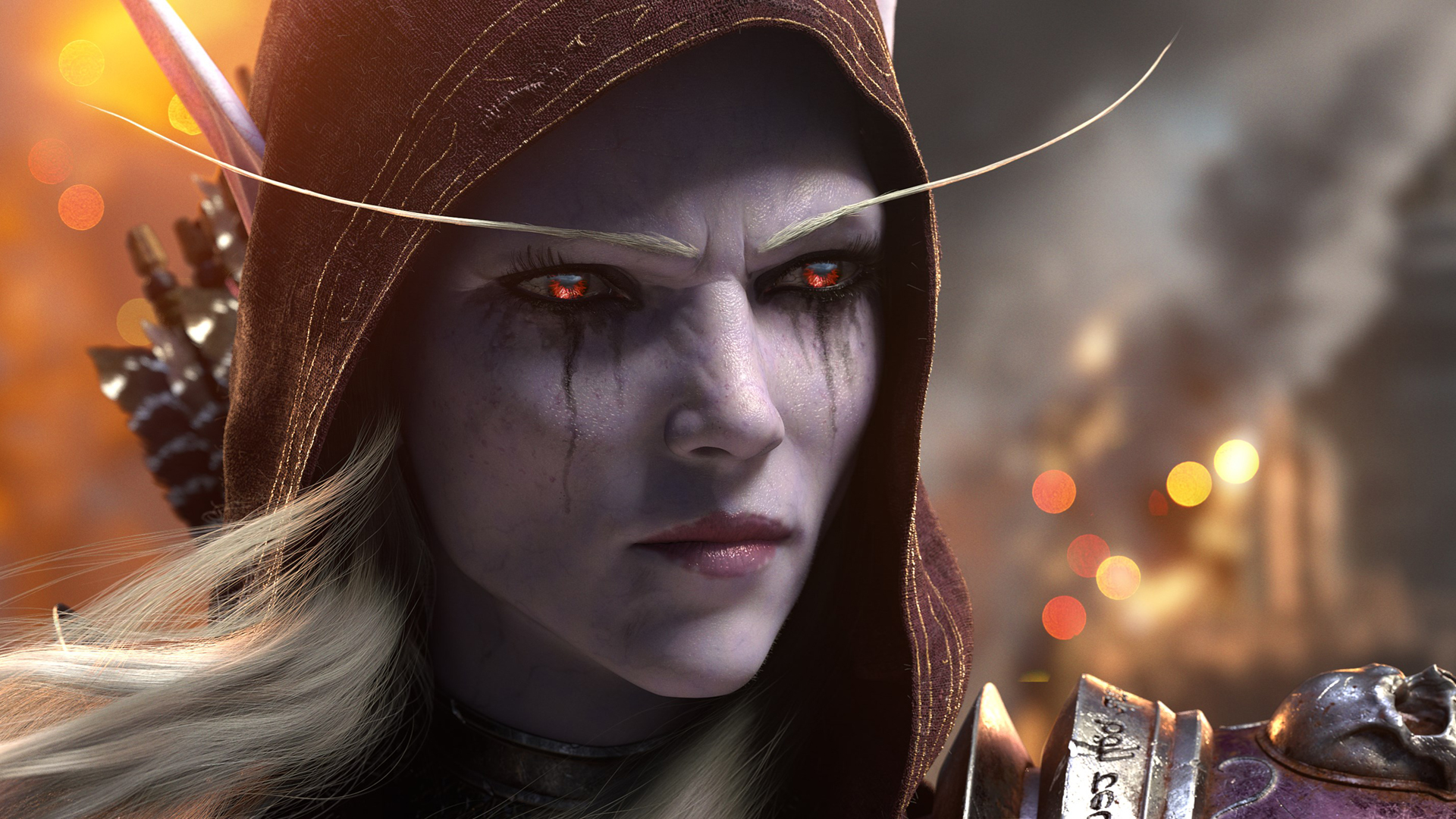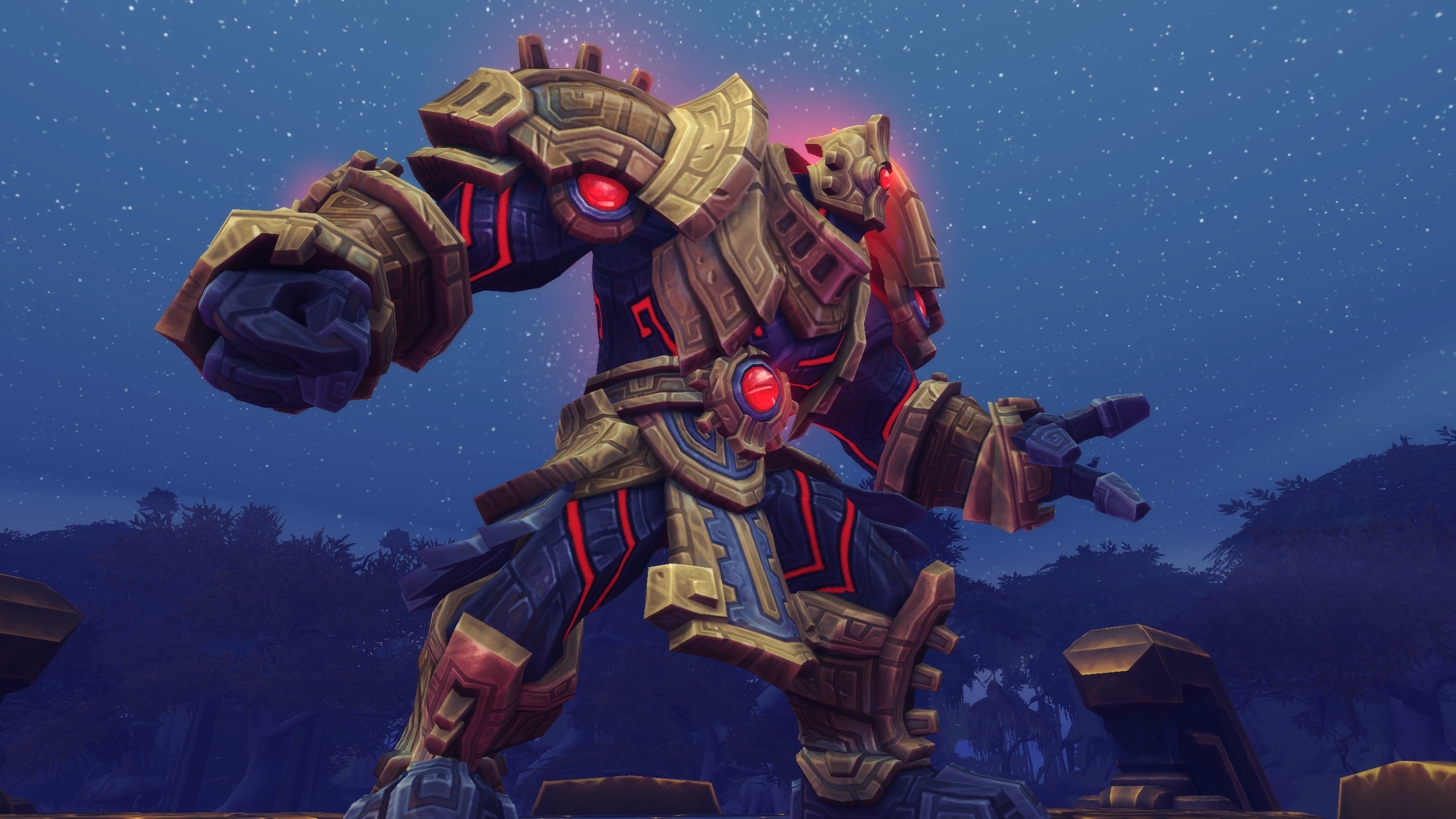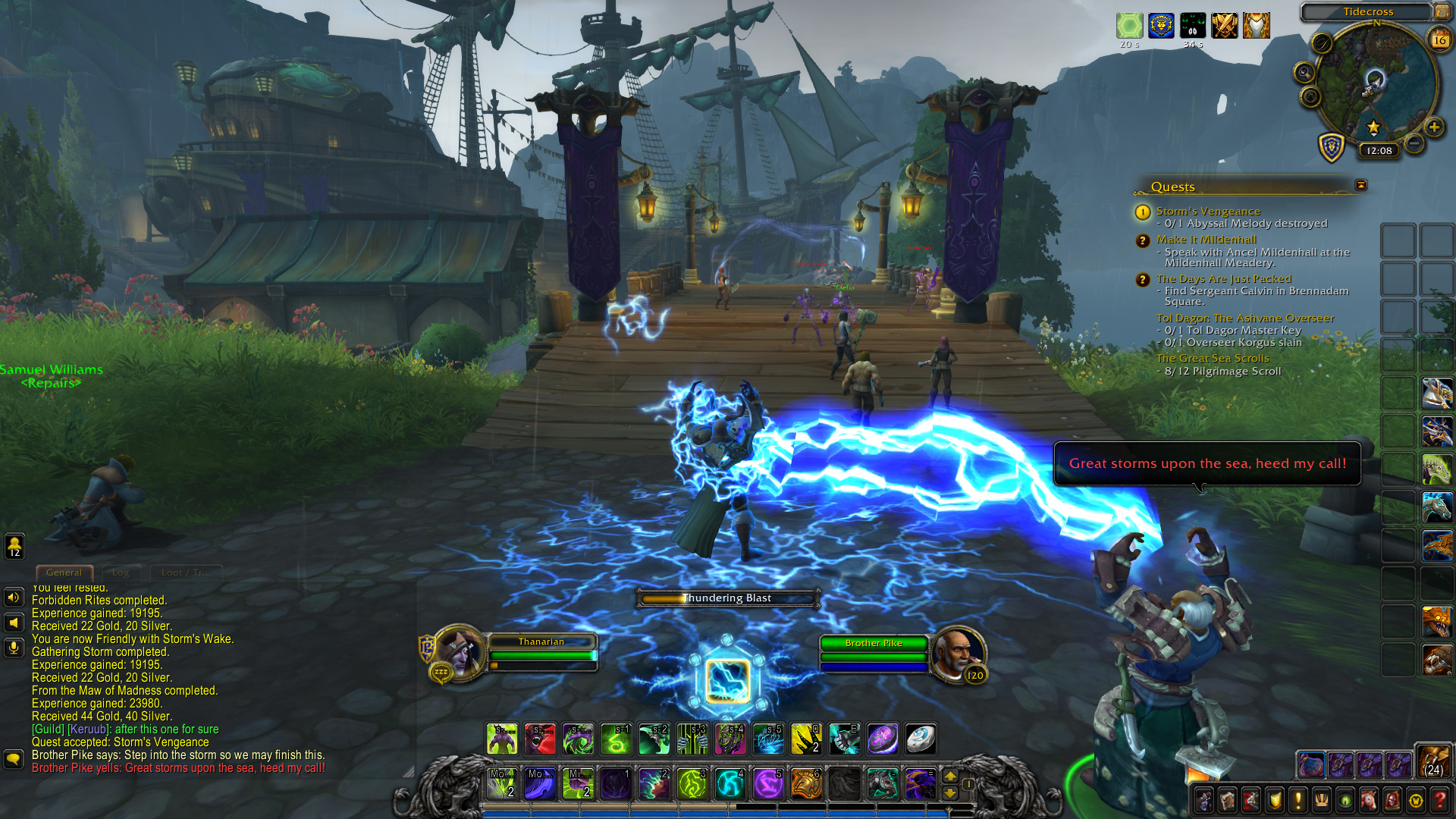How is World of Warcraft: Battle for Azeroth holding up one month after launch?
Despite its underwhelming new activites, Battle for Azeroth is still a lot of fun.

The honeymoon phase is over for Battle for Azeroth, World of Warcraft's seventh expansion. Since its release on August 13, I've reunited the houses of Kul Tiras, spelunked into the halls of Uldir and each of Battle for Azeroth's ten dungeons, and helped more turtle hatchlings brave the treacherous journey to the safety of the ocean's waters than I care to admit. But now that I've spent a significant amount of time (another hundred hours almost) with Battle for Azeroth's myriad new systems, progression grinds, and group activities, how are they holding up?
Short answer? Pretty good, but there's a lot that needs improving.
When I first reviewed Battle for Azeroth, it was clear that this was no Legion. It lacked that ‘all hands on deck’ vibe that made Warcraft's previous expansion so exciting—Blizzard pulled out all the stops to win fans back after the disappointment of Warlords of Draenor. But Battle for Azeroth is a much more modest expansion, both in terms of its themes and aesthetics. It refocuses on the basics of the Warcraft universe and turns the high-fantasy dial down from 11 to a seven, and despite how jarring that initially was, I love that. World of Warcraft feels like a world again, with six stunningly detailed and cohesive zones, a story that forgoes intergalactic mega-threats in favor of emotional character development, and villains who feel suitably intimidating without having to be the size of a goddamn planet.
But it hasn't been all sunshine and rainbows on the two continents of Zanadalar and Kul Tiras, either. If you've been following my coverage of Battle for Azeroth so far, you'll know that this expansion has sparked enough community drama that Blizzard has had to do damage control to try to quell the rising tide of negativity around its less than favorable systems.
Annoying Azerite
It's not a good experience when you weather the brutal gauntlet of raid bosses in Uldir only to receive a piece of armor that should be an upgrade but actually isn't.
The biggest problem is Battle for Azeroth's equipment system, called Azerite Armor. I've explained the ins and outs of it already, but the summary is that it's counter-intuitive, grindy, and ultimately just not a lot of fun to use. In Legion, players wielded legendary weapons with their own skill trees that had a tangible effect on combat. Battle for Azeroth's Azerite Armor, by comparison, strips away much of that fun and doubles down on the grind, leaving players with a system that frequently throws the middle finger at players who finally got that coveted piece of gear but didn't do enough arbitrary grinding to fully unlock its latent powers. It's not a good experience when you weather the brutal gauntlet of raid bosses in Uldir only to receive a piece of armor that should be an upgrade but actually isn't.
There is a light at the end of the tunnel though, assuming Blizzard can make good on its promise to fix the system. Unlike Legion's Legendary item system (which is separate from the Artifact Weapons I mentioned earlier), Azerite Armor isn't broken on a systemic level. Its biggest issues are ones that, I believe, can be fixed by adding more interesting abilities to the skill tree and dialing back the amount of grind required to unlock those abilities.

Azerite Armor isn't the only new system that isn't as exciting as it sounded in the months prior to release. Warfronts are the final pillar of Battle for Azeroth's entirely new features that released alongside the Uldir raid and Mythic+ dungeons in early September—only Alliance characters like myself couldn't play them until last week because of the weird schedule of when Warfronts are actually available.
The biggest gaming news, reviews and hardware deals
Keep up to date with the most important stories and the best deals, as picked by the PC Gamer team.
Like a lot of Battle for Azeroth's ideas, Warfronts sound amazing on paper. While more will be added over time, the first Warfront takes place in the Arathi Highlands, with the Horde and Alliance taking turns to siege each other’s strongholds in a 20-player PVE experience that draws heavily from Warcraft 3's real-time strategy battles. But it's all wrapped up in a weird metagame that requires one faction to first stockpile resources to even unlock the actual Warfront experience. If that's a little hard to wrap your head around, don't fret. How Warfronts work was so poorly communicated by Blizzard that it had to apologize to frustrated players.
The confusing metagame aspect of Warfronts aside, the real appeal is the 20-player group experience. Though the battle takes place against an AI army of the opposing faction, it's war on a scale unlike anything I've seen in World of Warcraft.
The siege begins with my group of 20 players air-dropping PUBG-style into the ruins of Fortress Stromgarde in Arathi Basin. Like Warcraft 3, our first objective is to begin amassing resources from the nearby mines and woods that we use to construct new buildings like a barracks, town hall, siege workshop, and more. Meanwhile, both our NPC commander and the enemy general dispatch waves of AI soldiers to various capture points across the map where they battle it out similarly to the waves of creeps in a MOBA.
In these early moments of the Warfront, I love how many options I have. I can help gather wood or iron, or I can ride for the frontlines and battle the enemy and try to capture settlements that provide various bonuses to my group. Though Warfronts typically last about 30 minutes, there's a lot happening at any one time. I can spend resources on siege machines to assault the opposing fort's gates, I can hunt down rare monsters that infer powerful bonuses, or I can save up and buy myself a giant talbuk warmount and ride it straight into the enemy formation to wreak havoc. The first few times I played through Warfronts, I had a blast.
Because Warfronts are designed for an uncoordinated party of 20 players, there's really no need to strategize or work together.
But then I realized that, much like the Warfront metagame, it was all just an illusion. Because Warfronts are designed for an uncoordinated party of 20 players, there's really no need to strategize or work together. Unlike a proper Warcraft 3 battle, there's no real depth or consequence to the choices I make. It's telling that, during one Warfront, I had to get up to help my partner with something and returned almost ten minutes later to find the battle was still going smoothly—something I wouldn't imagine doing in a dungeon or an actual game of Warcraft 3. I would much rather Warfronts be designed for smaller, more coordinated groups or have the option of harder difficulty modes. Once you play through the same one a few times, it loses all of that initial thrill and tension.
Rough landing
Warfronts' lack of interesting choices and diversity is a problem shared by Battle for Azeroth's other new activity, Island Expeditions. When I first reviewed them, I had a great time racing across islands full of randomly generated enemies and encounters. But because Island Expeditions are designed to be played upwards of seven times a week, I quickly hit the limits of that random generation and began seeing the same monsters and random encounters again and again. I still find Island Expeditions fun but, like Warfronts, they're underwhelming. That's a theme shared by all of Battle for Azeroth's biggest features.
Legion significantly revamped World of Warcraft's endgame by adding World Quests and Mythic+ dungeons, both of which are copied into Battle for Azeroth. That means the backbone of what makes Battle for Azeroth's endgame good—the dungeons, world quests, and raids—are all systems that I've been playing with for years. Meanwhile, the new endgame activities that Battle for Azeroth brings to the table are, right now, failing to impress despite being functional. It leaves this expansion in an awkward position: Battle for Azeroth is still great, but it owes much of that greatness to the innovative ideas introduced back in Legion.

But that's OK. The World of Warcraft subreddit and forums have a tinge of negativity that any Destiny 2 player can sympathize with, but Battle for Azeroth is still a lot of fun. The core structure of World of Warcraft is as strong as ever even if Blizzard doesn't stick the landing with Battle for Azeroth's newest features. The new dungeons are a blast, especially if you brave their Mythic+ difficulty versions. And while I haven't fully beaten Uldir on normal difficulty yet (I'm a busy man, sue me), I love the atmosphere and design of the bosses. M.O.T.H.E.R., a fight that demands an almost disturbing level of coordination, is the kind of white-knuckle challenge that makes me wish I had the time and energy to taking raiding more seriously.
Though Warfronts, Island Expeditions, and Azerite Armor are all lackluster, none of them are broken at a fundamental level.
I'm deeply invested in seeing how Battle for Azeroth evolves over the next few months. Though Warfronts, Island Expeditions, and Azerite Armor are all lackluster, none of them are broken at a fundamental level. Update 8.1 will add a new Warfront and more Island Expeditions with more diversity that should make repeat playthroughs more interesting. But I'd love to see Blizzard go back to the drawing board with Warfronts and find ways to ramp up the difficulty so that these massive sieges don't just emulate the scale of Warcraft 3, but also the challenge. And Azerite Armor is already being tuned to buff up less interesting skills and replace the boring ones entirely.
This first month of Battle for Azeroth has had more downs than ups, but I still feel just as excited about the future of Warcraft as I did during Legion's first months—especially when it comes to the story. Right now, the war between the Alliance and Horde doesn't have the same immediacy of the pre-expansion event, but 8.1 promises to ramp that conflict up with more story quests and a new raid that has a few separate bosses depending on which faction you play. Now we just have to hope that Blizzard can fix Battle for Azeroth's underwhelming features to make them as good as the rest of World of Warcraft.
With over 7 years of experience with in-depth feature reporting, Steven's mission is to chronicle the fascinating ways that games intersect our lives. Whether it's colossal in-game wars in an MMO, or long-haul truckers who turn to games to protect them from the loneliness of the open road, Steven tries to unearth PC gaming's greatest untold stories. His love of PC gaming started extremely early. Without money to spend, he spent an entire day watching the progress bar on a 25mb download of the Heroes of Might and Magic 2 demo that he then played for at least a hundred hours. It was a good demo.


